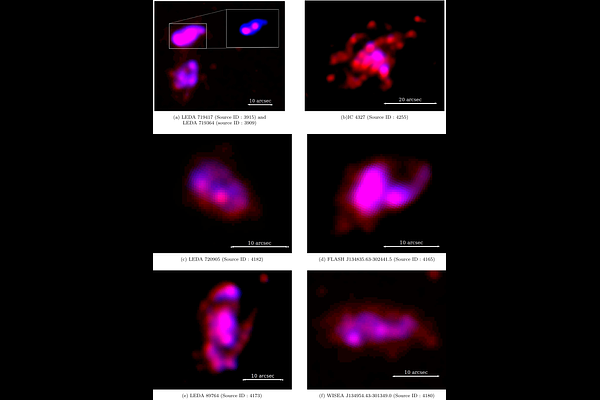AstroSat/UVIT far and near UV deep field around IC 4329A

AstroSat/UVIT far and near UV deep field around IC 4329A
Piyali Ganguly, Priyanka Rani, Gulab C. Dewangan
AbstractWe present high-resolution near-ultraviolet (NUV) and far-ultraviolet (FUV) deep imaging of the field around the Seyfert galaxy IC~4329A based on five observations performed with the Ultra-Violet Imaging Telescope (UVIT), onboard AstroSat. The long exposures of 82.9 ks in NUV (N245M; $\lambda_{mean}=2447$\r{A} ; $\Delta\lambda = 270$\r{A}) and 92.2~ks in FUV (F154W; $\lambda_{mean} = 1541$\r{A}; $\Delta\lambda=380$\r{A}) bands constitute the deepest observations with $5\sigma$ detection limits of AB magnitudes $m_{NUV}= 26.2$ and $m_{FUV} = 25.7$. Leveraging UVIT's excellent angular resolution (FWHM $\sim 1.2-1.8^{\prime \prime}$), we performed a detailed analysis of the IC~4329A field and detected (above 5$\sigma$ significance level) a total of 4437 and 456 sources in the NUV and FUV bands, respectively. A large number of these detected sources were unknown previously. We performed astrometry and photometry on all detected sources. By cross-matching our catalogue with Gaia-DR3 and XMM-Newton DR12 catalogues, we found 651 optical and 97 X-ray counterparts of our sources. Additionally, we explored UV variability of point sources, identifying 28 NUV sources as variable with a significance above the $2.5\sigma$ level. Of these, only three sources exhibited variability in the FUV band. Utilising the NUV and Gaia fluxes, we determined that two previously catalogued white dwarf candidates are misclassified. Furthermore, we highlight galaxies with atypical morphology, including ring-like structures, multiple compact central sources, bifurcating spiral arms, etc. Follow-up optical spectroscopy and multi-wavelength observations are imperative to further investigate the nature of the sources within this field.